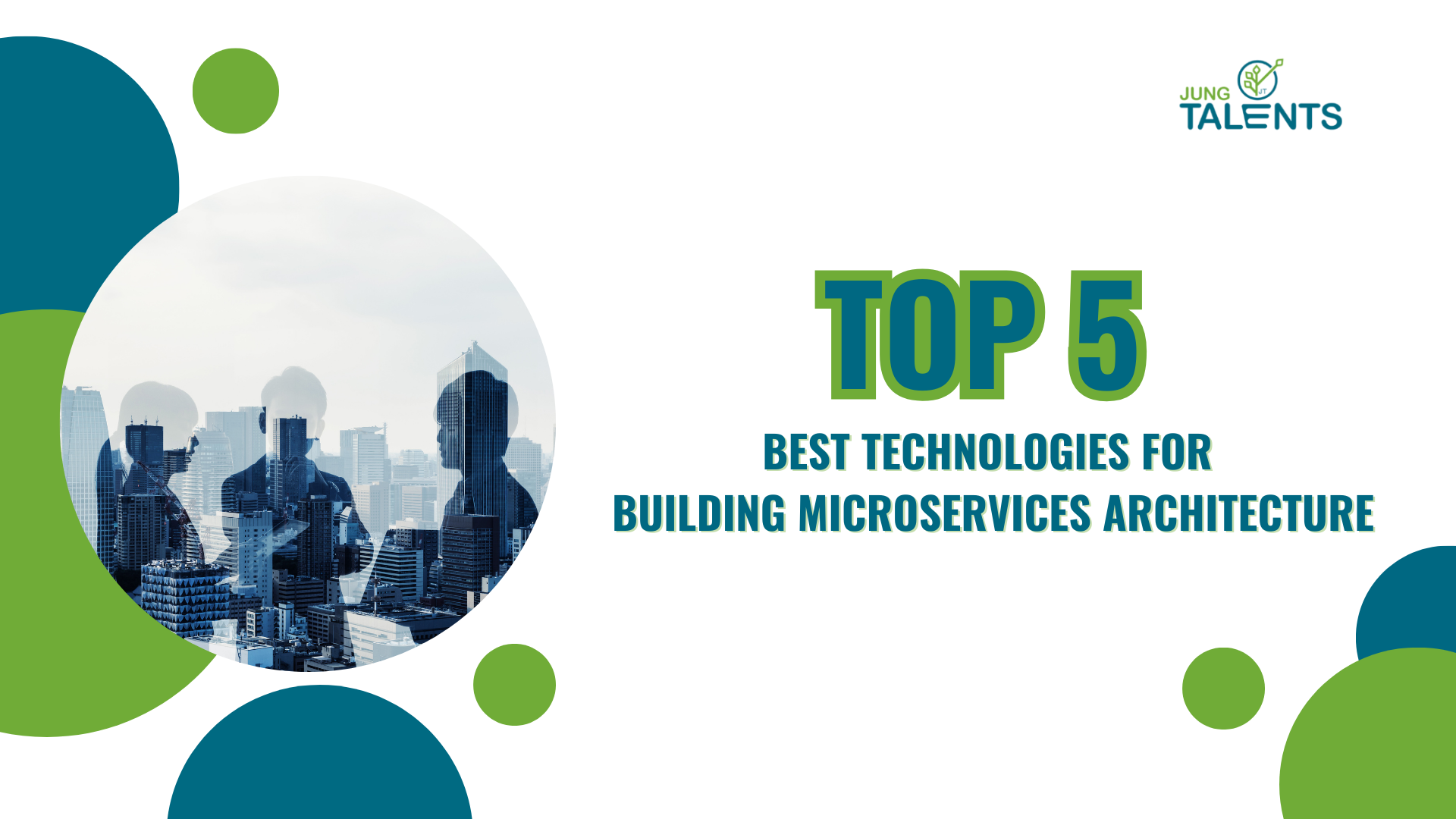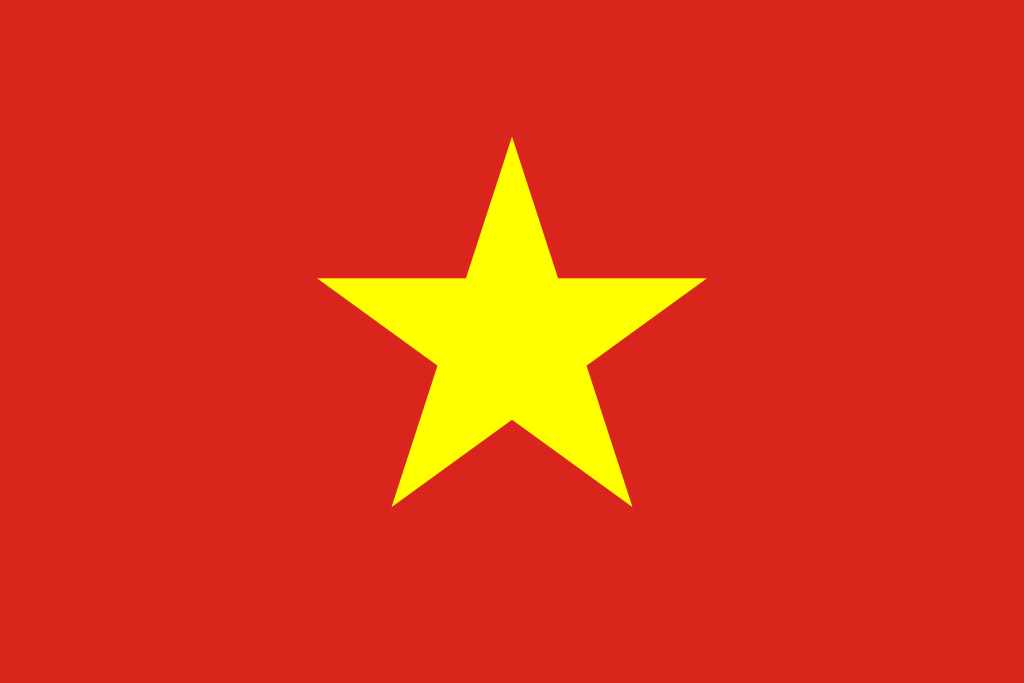TOP 5 BEST TECHNOLOGIES FOR BUILDING MICROSERVICES ARCHITECTURE

Let's go through some programming languages with features and libraries that will help you accomplish your tasks with Jung Talents. But first, let's start by understanding Microservices.
This may not be the ideology under which Microservices operate, but it's definitely the principle we follow while developing applications on a Microservices architecture.
Microservices are becoming popular in the market as businesses lean towards building more complex and larger applications that can be decoupled and handled as a collection of smaller services. More and more people are seeking to redesign their traditional monolithic systems into a chain of unique, independent microservices.
The natural question that arises is, what language is most conducive for developing your next microservice project?
You can use various technologies based on what serves your service's purpose best. But first, let's start by understanding Microservices.
What is Microservices Architecture?
Microservices architecture is a development approach where you can break down an application into a series of smaller services, each running its own process and interacting through lightweight mechanisms. Microservices are developed around business capabilities and can be deployed independently with automated deployment mechanisms. They need minimal management and can be developed in different programming languages, using different data storage technologies.
Reasons to Move to Microservices Architecture In a monolithic architecture, understanding and managing complexity in a large application can be difficult.
- Applications require extensive manual testing to understand the impact of changes.
- Even for a minor change, the entire application needs to be redeployed.
- Heavier monolithic applications can slow down startup times.
Benefits of Microservices
- Easier process application – Technology adoption and process application become simpler.
- Smaller modules – Easier development and maintenance.
- Independent Scalability – Each module in microservices can be scaled independently either through:
- X-Axis scaling – by replicating with more memory or CPU
- Z-Axis scaling – by size through sharding
- DURS - Each service in a microservices architecture can be independently Deployed, Updated, Replaced & Shrunk. Fault Isolation - A fault in one module does not affect the rest of the application.
Microservices enable better autonomy for development teams, better fault isolation, reusability, and scalability.
Technology Selection Criteria for Microservices
With Microservices, you can build a reliable platform to expand your business while leveraging language diversity. Standardizing your tech stack based on your business needs minimizes operational costs. The criteria to evaluate programming languages for developing microservices are:
- High observability
- Automation support
- Consumer-first approach
- Independent deployment
- Business-centric modeling
- Component hierarchy
- Continuous integration support
Best Languages for Microservices
Microservices can be deployed with numerous frameworks, versions, and tools. Java, Python, C++, Node JS, and .Net are a few among them. Let us explore the languages supporting microservices development in detail:
1. Java
Annotation syntax, readability, are the key factors making Java an excellent language for developing microservices. This makes Java Microservices development much easier when supported by Microservices frameworks. It brings greater readability, especially when working with complex systems.
In addition, Java EE standards are very suitable for microservices applications, like:
- JAX-RS for APIs
- JPA for data handling
- CDI for dependency injection & lifecycle management
Also, service discovery solutions like Consul, Netflix Eureka, or Amalgam8 are easily integrated with Java Microservices.
Several frameworks for Microservices architecture exist. Some Java Microservices Frameworks are:
- Spring Boot – Works across different languages for Aspect-Oriented Programming, Inversion of Control, and others
- Dropwizard – A Java microservices framework that consolidates mature and stable Java libraries into a simple, lightweight package
- Restlet – Supports developers in building better web APIs, following REST architecture patterns
- Spark – One of the best Java Microservices frameworks, supports building web apps in Java 8 and Kotlin with less effort
2. Golang
If you want to elevate your existing project, Golang could be an excellent choice for developing microservices. Golang, also known as Go, is popular for its concurrency support and microservices architecture API. With Golang's concurrency, you can expect productivity gains across different machines and cores. It includes a robust standard for developing web services and is specifically designed for building large, complex applications. Go offers two impressive frameworks for developing microservices:
- GoMicro – An RPC framework, coming with benefits like Load Balancing, server bundling, PRC client applications, and message encryption.
- Go Kit – The main difference from GoMicro is that it needs to be imported into the binary package. Furthermore, …
In addition to its simple syntax, Go's microservices architecture includes excellent testing support, making it easier for you to write robust tests and seamlessly integrate them into your workflow.
3. Python
Python is a high-level programming language that actively supports integration with various technologies. Templating in Python is faster and easier compared to other languages and frameworks. It includes robust alternatives to heavyweight deployments like Django. Python's microservices ensure compatibility with legacy languages like ASP and PHP, allowing you to create web service user interfaces to host microservices.
With all these benefits, Python microservices are considered to have an edge over other languages. Developers deploying Python microservices utilize the RESTful API methodology—a comprehensive approach to using web protocols and software to manipulate remote objects. With this technology, application monitoring becomes easier as it is now broken down into components. There are many Python microservices frameworks to choose from for your web application development. Some of them are:
- Flask – The most popular Python Micro framework based on Jinja2 and Werkzeug
- Falcon – Create smart proxies, cloud APIs, and application backends
- Chai – A simple, lightweight, and fast WSGI micro-framework
- Nameko – The best among Python Microservices frameworks allows developers to focus on application logic
- CherryPy – A mature object-oriented Python web framework
4. Node JS
Node JS has become the preferred platform in recent years for enterprises and startups wanting to use microservices. Built with the V8 runtime, Node JS microservices become super-fast for IO-bound tasks. Typically, Node JS Microservices are developed with either CPU-bound or IO-bound code. CPU-bound programs require intensive computation. Whenever you run an IO call, Node JS doesn't block the main thread but dispatches tasks to be executed by internal IO background threads. Therefore, Node JS Microservices are popular for IO-bound tasks.
Highly innovative enterprises agree that Node JS microservices are a great combination to improve productivity, high performance, please developers, and reduce costs.
5.Net
ASP.Net, the .Net framework for web development, makes building APIs into microservices simple. It includes integrated support for building and deploying services using Docker containers. .Net comes with APIs that easily consume services from any application you've developed, including desktop, mobile, web, games, etc. If you have an application, you can start using .Net services without entirely modifying that application. Initial setup for .Net Docker images has been done and is available on Docker Hub, allowing you to focus solely on building your microservices.
.Net microservices architecture allows the integration of technologies between each service; thus, you can use .Net for a specific part of your application without deploying it everywhere. You can combine .Net microservices with applications written in Java, Node JS, or any other language. This allows a gradual transition to core .Net technology for new services that work in conjunction with other services and those built with different technologies. Likewise, .Net microservices can run on all leading cloud platforms.
The future of microservices brings us closer to a serverless architecture; particularly, the promise of cost-saving by paying only for the computing power used is even more attractive. Microservices is an extended concept applicable to applications, products, or solutions that are modular and more detailed. Please note that you should not start a microservices architecture from scratch as it is very hard to define the boundaries of each service right from the beginning. There is no better way to choose the perfect technology for your microservice. Every technology decision depends on the tools you will use to develop other parts of your application. It also depends on the current expertise of your development team.

